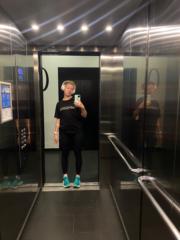Feb 22 (edited) • General discussion
Running by the 80/20 Rule: 10 Key Ideas
🔰How to Run Faster by Slowing Down
To improve your running, you need to slow down. Consistency is key to progress, and running hard every day is not sustainable—it’s exhausting both mentally and physically. Many amateur runners push themselves too hard, often because they’re obsessed with high-intensity workouts. But here’s the secret: you get faster by running slowly most of the time.
🔰Why Slow Running Works
Research shows that the best runners in the world spend about 80% of their training time at a low intensity—a pace where you can still hold a conversation. By limiting hard workouts, these runners avoid burnout and perform better than those who are constantly tired.
🔰The Leap of Faith
The idea of running slowly to get faster isn’t new, but many runners still don’t believe it. Why? Because it feels unnatural. Most runners want to push themselves out of their comfort zone every time they train. But for beginners or those carrying extra weight, the "anaerobic threshold" (where running gets hard) kicks in almost immediately. This leaves little room for low-intensity training.
However, runners who embrace slow running see amazing results: their training becomes less exhausting, and their performance improves.
🔰The 80/20 Rule
The 80/20 rule is simple: spend 80% of your training at low intensity and 20% at moderate to high intensity. This balance helps you build endurance without overtraining. Many runners think they’re running easy, but they’re actually pushing too hard, which slows their progress.
🔰The Perception Problem
Humans are wired to finish tasks quickly, so even when we’re supposed to run at an easy pace, we often speed up unconsciously. This happens because we want to end the discomfort as soon as possible. But running at a moderate intensity all the time isn’t effective—it leads to fatigue and limits improvement.
🔰Intensity Blindness
Most runners don’t realize they’re running too hard. To fix this, try a running detox: spend a week running at an extremely slow pace. This will help you reset and understand what true low-intensity running feels like. Ignore your pace and heart rate—just focus on how it feels. If you think you’re running slow, slow down even more.
🔰Mindful Running
Once you’ve found your easy pace, the next step is to focus your mind. During your first slow runs, your thoughts might wander, and you might accidentally speed up. It’s a mental challenge to stay slow, but over time, you’ll get used to it. Start with short runs and gradually increase the distance.
🔰Plan and Monitor
The 80/20 rule requires planning and monitoring. Create a training schedule with 80% easy runs and 20% harder workouts. Use tools like a heart rate monitor to track your intensity. Many runners know how many miles they’ve run, but few know how much time they’ve spent below their anaerobic threshold. Monitoring this can prevent overtraining.
🔰Run Longer to Get Faster
To run faster in races, you need to run longer in training. Endurance is the key to maintaining a fast pace over distance. By increasing your training volume, you improve your aerobic capacity, which allows you to run faster without feeling exhausted.
🔰Do You Need High-Intensity Workouts?
Yes, but in moderation. High-intensity workouts stress your aerobic system, helping it adapt and grow stronger. However, too much high-intensity training can lead to burnout. The ideal balance is mostly easy runs with a small portion of hard workouts.
🔰Building Fatigue Resistance
Low-intensity, high-volume training helps you build tolerance to fatigue. Long, slow runs teach your body and mind to handle discomfort over time, which is crucial for races. Speed workouts, on the other hand, train your brain to handle short bursts of discomfort.
🔰Technique and Self-Optimization
Good running technique is about efficiency, not perfection. Trying to force changes to your natural running form can backfire. Instead, focus on running relaxed and smooth. High-volume, low-intensity training helps you develop a natural, efficient stride over time. Your body will self-optimize, finding the most effective way to move.
6
3 comments

skool.com/become-better-runner-4238
Welcome to Better Runner ! This is where runners of all levels achieve their goals.
Powered by





